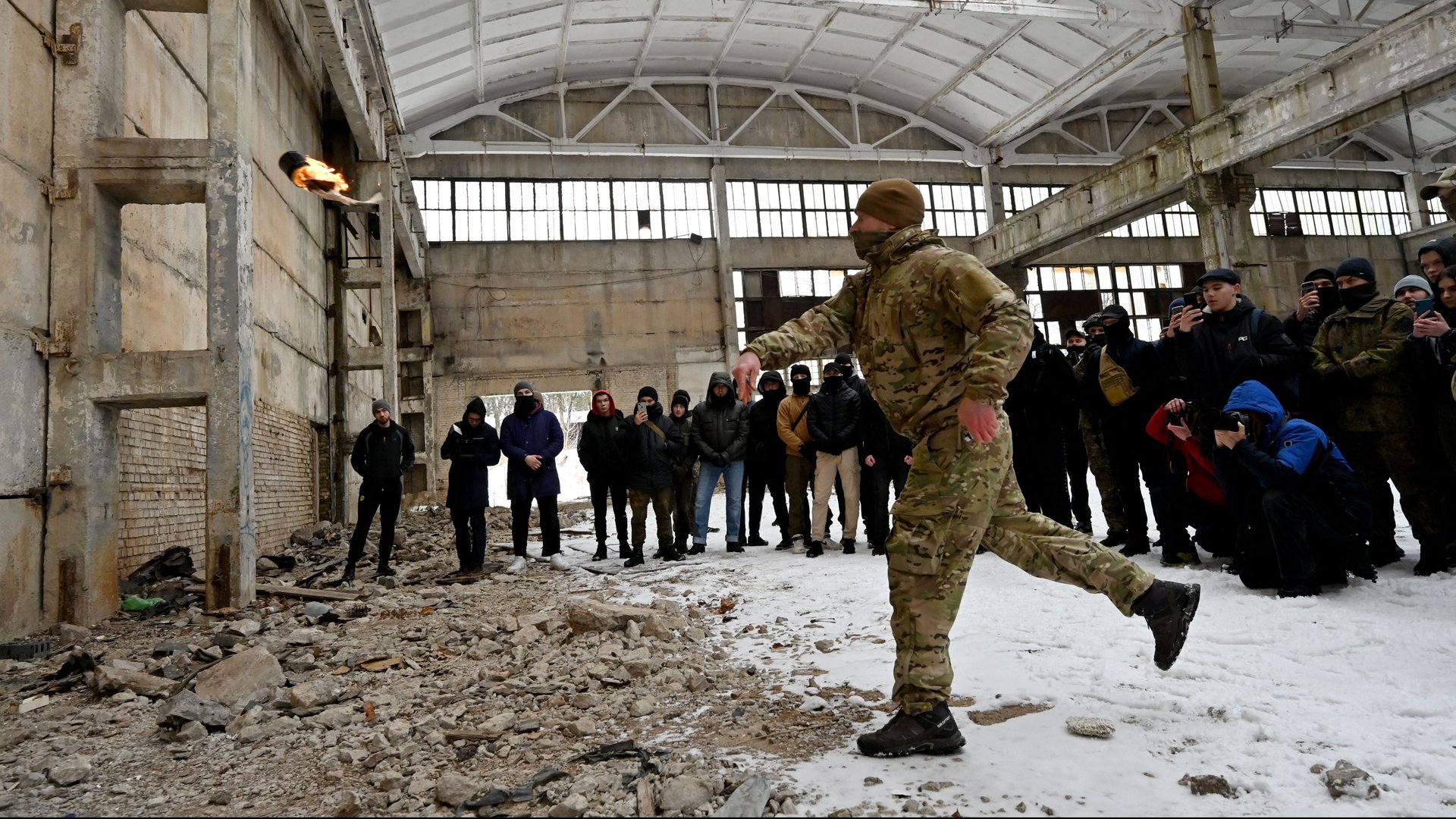How did the Molotov cocktail get its name?
As Russian troops approached Kyiv on Friday (Feb. 25), Ukraine’s defense minister encouraged the citizens of Kyiv to make Molotov cocktails as they prepared to defend their home.


As Russian troops approached Kyiv on Friday (Feb. 25), Ukraine’s defense minister encouraged the citizens of Kyiv to make Molotov cocktails as they prepared to defend their home.
Sometimes called bottle bombs, petrol bombs, or the poor man’s grenade, Molotov cocktails have long been the weapon of choice for protesters and revolutionaries. While the device itself has a simple design—often just a bottle filled with alcohol or gasoline, with a rag as a fuse—petrol bombs’ origins are murky. They might have first been used by General Francisco Franco’s troops during the Spanish Civil War in the mid-1930s. Or maybe by Ethiopians fighting against Italian troops in the Abyssinian War in 1935. Or perhaps by the Irish Republican Army along the Irish border in 1922.
The Russian origins of Molotov cocktails
It wasn’t until 1939 that the Molotov cocktail got its name. The non-aggression pact signed in August by Nazi Germany and the Soviet Union gave Russia control of Finland. That winter, the Soviets invaded and began air strikes on the country, though minister of foreign affairs Vyacheslav Molotov assured Russian radio listeners that the USSR was dropping humanitarian aid, not bombs. Cheeky Finns called these airborne deliveries “Molotov’s picnic baskets” and vowed to respond with “Molotov cocktails.”
Finland’s bottle bombs were mass produced by the Alko corporation, which added tar to the gasoline so the flaming liquid would better stick to its target. All told, the Finns threw half a million Molotov cocktails and damaged hundreds of Soviet armed vehicles. Although they ultimately lost the war, the idea caught on. The British home guard stockpiled petrol bombs to use against a potential Nazi invasion, and the Polish army developed a version with sulfuric acid, sugar, and potassium chlorate that ignited upon impact, negating the need for a fuse.